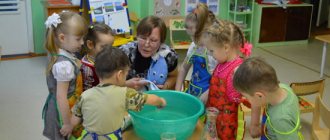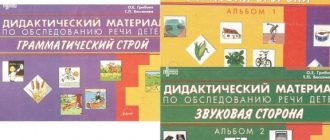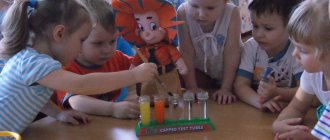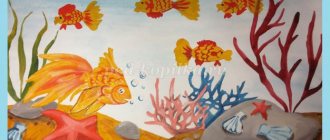Sensory and rational cognition
At the moment of assimilation of knowledge, each person uses a certain structure, the same for all people . It is based on the senses, as structural elements of cognitive abilities, identically involved, dictating the general laws of cognition.
The knowledge of each person includes 2 steps:
- sensory (empirical) – considering sensations, perceptions and ideas as the main form of genuine comprehension. This is the case when a person himself understands what is happening;
- rational - considering reason as the support, source and main measure of the reliability and infallibility of human aspirations. In this situation, a person not only understands, but is also able to explain and even prove what he understands to another.
Sensory cognition includes three multi-level forms, established from lower to higher:
- sensation;
- perception;
- performance.
Sensations are primary information about objects obtained with the help of analyzers; they are also the most primitive and do not reflect the integrity of the object:
- color;
- smell;
- taste;
- tactile sensations.
Perception is already a combination of several sensations and a more complex form of sensory acquisition. Fragmentary sensations merge into a holistically defined image. There is a separation of one object from another. Through perception, an adequate recognition of an object and the relationship of its images are achieved.
Representation is a transitional link between sensory and rational comprehension, containing sensory and rational elements of study. Its specific feature is the separation of the image from the object: the ability to represent the object in its absence. The ability to mentally operate an object without direct contact with it. In other words: use imagination and fantasy in relation to the object.
The prerequisites for rationality are:
- separation of thought from the subject;
- thinking as the completion of the generalization process, the formation of abstract concepts: matter, mass, time, space.
Rational cognition as a thinking process includes 3 forms of one-level order:
- concept;
- judgment;
- inference.
However, such a process is not feasible without such specific techniques of abstract logical thinking as:
- comparison;
- analysis;
- synthesis;
- induction;
- deduction;
- idealization;
- abstraction.
Thanks to them, conclusions are drawn. By comparing, analyzing and synthesizing the data obtained, a person forms his own conclusions. Comparison is the main method of mental activity.
Both stages are in organic unity, interconnection and interpenetration, passing into one another like a diffuse phenomenon. The system of human analyzers, as a stage of sensory development, is created for the perception of sensations, and rational thinking is created for forming conclusions based on the information received. This allows us to obtain the most objective conclusions while constantly pursuing the main goal of knowledge - the search for truth.
Cognitive development of preschool children
From the experience of a preschool teacher
“The best discovery is the one that a child makes himself” Ralph W. Emerson The Federal Law “On Education in the Russian Federation” states that preschool education should be aimed at the formation of a general culture, the development of physical, intellectual, moral , aesthetic and personal qualities, the formation of prerequisites for educational activities, the preservation and strengthening of the health of preschool children. One of the principles of the Federal State Educational Standards project for preschool education is the formation of cognitive interests and cognitive actions of the child in various types of activities. The educational field “Cognitive Development” involves the development of curiosity and cognitive motivation; formation of cognitive actions, formation of consciousness; development of imagination and creative activity; the formation of primary ideas about oneself, other people, objects of the surrounding world, etc. One of the types of activities to implement the tasks of this area is cognitive research (studying objects of the surrounding world and experimenting with them). In their works, many domestic teachers talk about the need to “include preschoolers in meaningful activities, during which they themselves could discover new things and about the opportunity to acquire knowledge on their own” (G.M. Lyamina, A.P. Usova, E.A. Panko etc.) It has long been no secret that the world opens up to a child through the experience of his personal feelings, actions, and experiences. “The more a child has seen, heard and experienced, the more he knows and has assimilated, the more elements of reality he has in his experience, the more significant and productive, other things being equal, his creative and research activity will be,” wrote the classic of Russian psychological science. science L.S.Vygodsky. Throughout preschool age, along with play activities, cognitive activity is of great importance in the development of the child’s personality, in the process of socialization, which is understood as the process of assimilation of knowledge, skills and abilities, and mainly as the search for knowledge, the acquisition of knowledge independently or tactfully. adult guidance. Cognitive - research activity begins in early childhood. When a child experiments with environmental objects, things, characterizing and highlighting their features. Already by the senior preschool age, cognitive and research activities become one of the leading ones. The child tries to understand how things work, to learn new things about the world and society. Tries to organize his ideas. The cognitive-research activity of an older preschooler manifests itself in the form of so-called children's experimentation with objects, as well as in the form of verbal exploration of questions that a child often asks adults ( why, why, how? ) In the process of learning about the surrounding reality of preschool children, the following stages can be distinguished : The first stage is curiosity. The child explores the surrounding reality with curiosity. A.N. Leontyev noted that a child is born already possessing certain inclinations, with “a readiness to perceive the world” and “the ability to acquire human abilities.” A feature of the second stage of perception of the surrounding world in preschoolers is an increase in its meaningfulness. Children highlight only interesting, significant and unusual objects for them. This promotes the development of curiosity and gives impetus to the emergence of research activities. The importance of the third stage in a preschooler’s knowledge of the world around him is acquired by visual-figurative thinking and imagination. At the fourth stage, the child uses different (acquired) methods of action and begins to focus on the process and the end result. The child develops a forecasting mechanism; he learns to foresee the result of his activities. The next stage of research activity is characterized by the fact that the main motive of reality is cognitive, not practical. The child performs this activity because “it is very interesting” to him. The child’s cognitive orientation allows him to receive various information from the surrounding reality that he encounters at every step. In the future, these skills and abilities acquired by the child in children's games and in specially organized activities are easily instilled and transferred in the future to all types of activities. After all, the most valuable and lasting knowledge is not that which is acquired through learning, but that which is acquired independently. The picture of the world gradually changes in the child’s mind. It becomes more adequate and holistic, reflects the objective properties of things and relationships. Cognitive activity is certainly an active activity in acquiring and using knowledge. It is characterized by the child’s cognitive activity, his active position as a subject of this activity. The motive for cognitive activity in preschool age is determined by the needs of other activities that are significant for the child, primarily play. A component of cognitive activity is cognitive interest—focus on the material (game, environmental, mathematical, etc.). associated with positive emotions. The principle of organizing the cognitive activity of preschool children is the principle of awareness and activity in the process of acquiring knowledge. The main task of a child’s cognitive development is the formation of the need and ability to think and overcome difficulties in solving various problems. Following from the above, this work on cognitive development should be carried out comprehensively. The full cognitive development of preschool children should be organized in three main blocks of the educational process: 1) cognitive classes; 2) in the joint cognitive activity of children with the teacher; 3) in the independent cognitive activity of children. Let us dwell on this in more detail. Organization of cognitive classes The content of cognitive classes depends on the educational program objectives, as well as on the content of the cognitive activity itself. A playful form of educational activities and the active use of gaming techniques during classes are recommended. Organizational structure of a game-based cognitive lesson In the introductory part, a cognitive task is set for children or a cognitive-game problem situation is created (help the hero, sew a dress, organize a trip, etc.). In the main part, the task is solved. In the process of completing a chain of tasks, the child acquires new knowledge and skills (mathematical, constructive), systematizes previously acquired ideas, and learns to apply them to new game problem situations. In the final part, children analyze the results obtained, the course of cognitive activity, and methods of implementation. In the classroom, it is recommended to widely use entertaining didactic material, playing it out in a variety of problem-game situations: didactic games, puzzles, rebuses, riddles, construction sets. The Danish construction set and its Russian analogues provide great opportunities for a child’s cognitive activity. “Dienesh Logic Blocks” are also an effective developmental tool. X. Cuisenaire's colored sticks are actively used in the educational process of modern preschool educational institutions. Organization of joint cognitive activities of the teacher and children. The main forms of organizing children's cognitive activity in this block are didactic and plot-didactic games. Working with children in this form excludes specially organized classes. Children's activity can be caused by the teacher. He involves them in educational and playful activities, showing his own passion for it. Also, the teacher can connect to the children’s already existing activities, directing them from within, as a partner. Alternatively, in some cases, it is possible to build joint cognitive activity so that the child, if desired, can continue it independently. Organization of independent cognitive activity of children Within the framework of this block, the creative activity of children develops in cognitive and play activities, free experimentation with various materials. The child gets the opportunity for self-realization. As part of free independent activity, children master the ability to act in a group, cooperate with friends, and enter into competitive relationships, which are necessary for the child’s prosperous existence in the children’s community. The project method as an option for integrating three blocks of the educational process of a preschool educational institution. To ensure the cognitive activity of children, the project method is widely used. It is used as an option for integrating different types of children's activities. Integration is the interpenetration of program sections and activities into each other, the mutual solution of various problems and educational technologies. The basis of integration is a single problem solved in the topic of the lesson; series of classes; classes; sections of the program. There are many options for working with children. The teacher has the right to choose. The teacher can independently develop and fill each option for organizing the cognitive activity of children of senior preschool age and fill it with content, depending on the characteristics of the educational program. The main thing is to skillfully and effectively use the possibilities of play in the cognitive development of each child. Literature : Federal State Educational Standard, Game education for children 5-7 years old. Methodical recommendations / Ed. N.V. Ivanova. - M.: TC Sfera, 2008. - 112 p., E. Krasheninnikova, Development of cognitive abilities of preschool children, Federal State Educational Standard.-M.: Mosaic - Synthesis, 2014, L.V. Godovkina, Correctional and developmental technologies in preschool educational institutions: programs development of the personal, cognitive sphere, Federal State Educational Standards. – M.: Teacher, 2014.
We recommend watching:
Musical development of preschool children Development of creative abilities of children of senior preschool age Sex education of senior preschool children Development of a sense of rhythm in preschool children
Similar articles:
Children's aggression. What to do?
Independent activity of children in the younger group according to the Federal State Educational Standard during a walk
How to take into account the child’s temperament in the process of teaching activities
Methods for early teaching children mathematics
Maria Montessori's method of early childhood development
Practical activities
Among the various activities, practical activities are of great importance. It is a way of including a person in the world around him and actively influencing him in order to transform existing objects and create new ones. Through practical activity, a person understands his capabilities through experience, studies the world around him, and finds his place in it. As a result, his inner world changes, his spiritual life is filled.
Finished works on a similar topic
Course work The essence of practical, cognitive, evaluative activity 430 ₽ Abstract The essence of practical, cognitive, evaluative activity 280 ₽ Examination The essence of practical, cognitive, evaluative activity 190 ₽
Receive completed work or specialist advice on your educational project Find out the cost
Practice is realized in the course of subject-object and subject-subject relations; it is always of a social nature. It presupposes the existence of a certain culture of communication as a condition for its existence. In addition to the active transformation of the external environment, practical activity presupposes the communication of people in the course of their work, as well as a set of values, norms, and rules that ensure the purposeful nature of the activity.
The following forms of practical activity are distinguished:
- production practice - the production of material objects, this type of activity underlies all human life;
- technical activity - the transformation of certain devices created by man (artifacts), an element of the productive forces that determines the nature and method of social production;
- social practice - transformation of the social environment, social relations, can be revolutionary in nature;
- science is a special form of activity that turns into a direct productive force that also controls social processes.
Note 1
Thus, practical activity can be aimed not only at transforming material objects, but also at changing social relations and social practice.
The most important function of practical activity is the ability to test our knowledge and resolve the question of truth. Only through practice can truth be separated from error. However, practice opportunities are limited.
Cognitive activity - what is it?
Cognitive activity is the process of assimilation and improvement of knowledge, its continuous increase and development.
This type of activity is inherent only to humans, and belongs to the highest form of mental cognition. It represents a symbiosis of sensory perception, theoretical awareness and practical actions. Accompanying all types of activities, it only at the moment of training acquires a clear, pronounced form and becomes conscious.
The basis of cognitive activity is the process of cognition, as the mental processing and mediation of information, ensuring the acquisition and accumulation of knowledge.
The process of cognition is one of the three processes that make up human consciousness, along with experience and reflection. It is realized through such mental processes as:
- attention;
- memory;
- thinking;
- speech;
- perception;
- sensation;
- performance;
- imagination.
To implement it, the following components are required:
- object (information, knowledge);
- subject (receiving knowledge - cognizing);
- cause-and-effect relationship between subject and object (why it is necessary to acquire this knowledge).
The result of such influence is the acquired knowledge as the fourth component of this process. Knowledge may be true or false, but it is still the result of knowledge.




